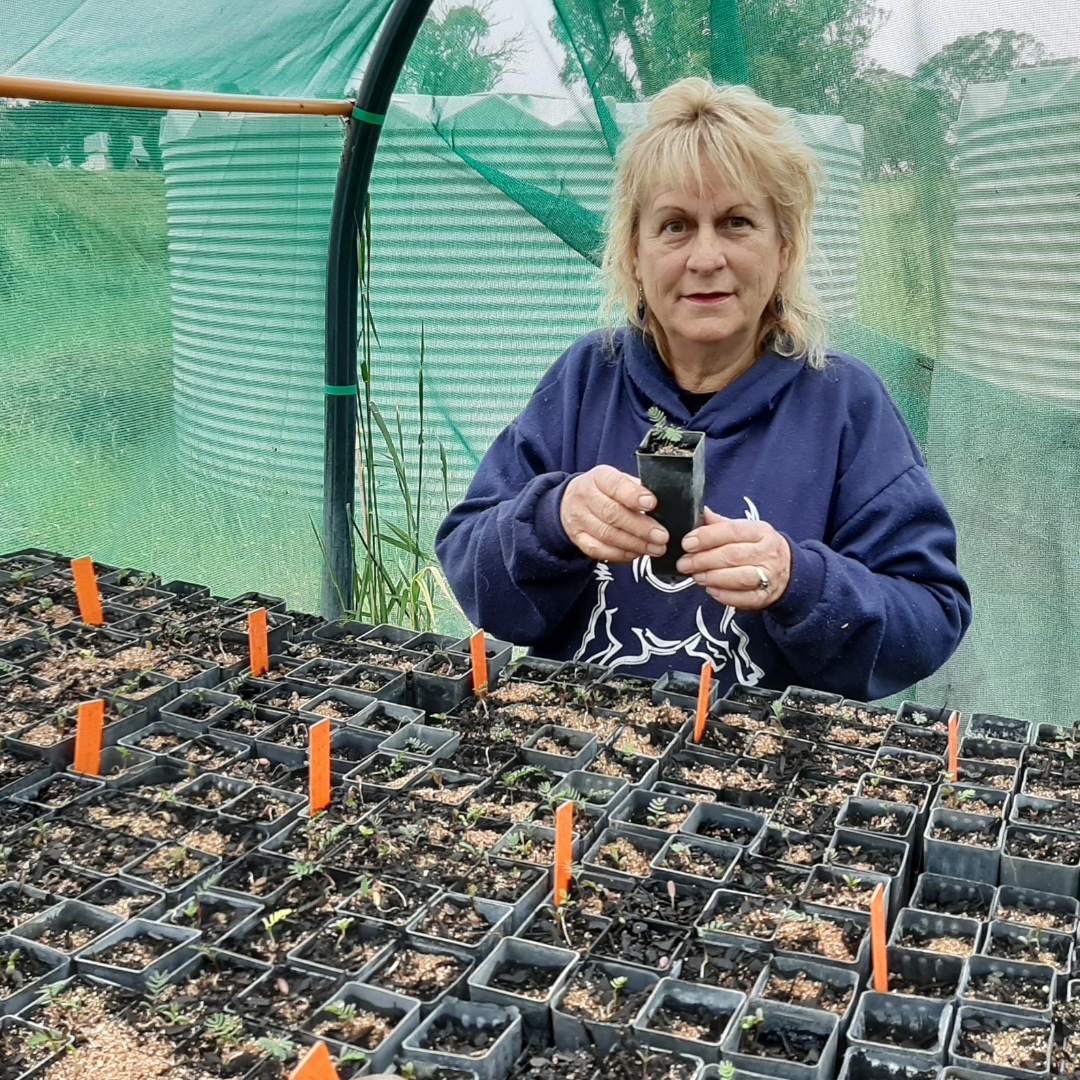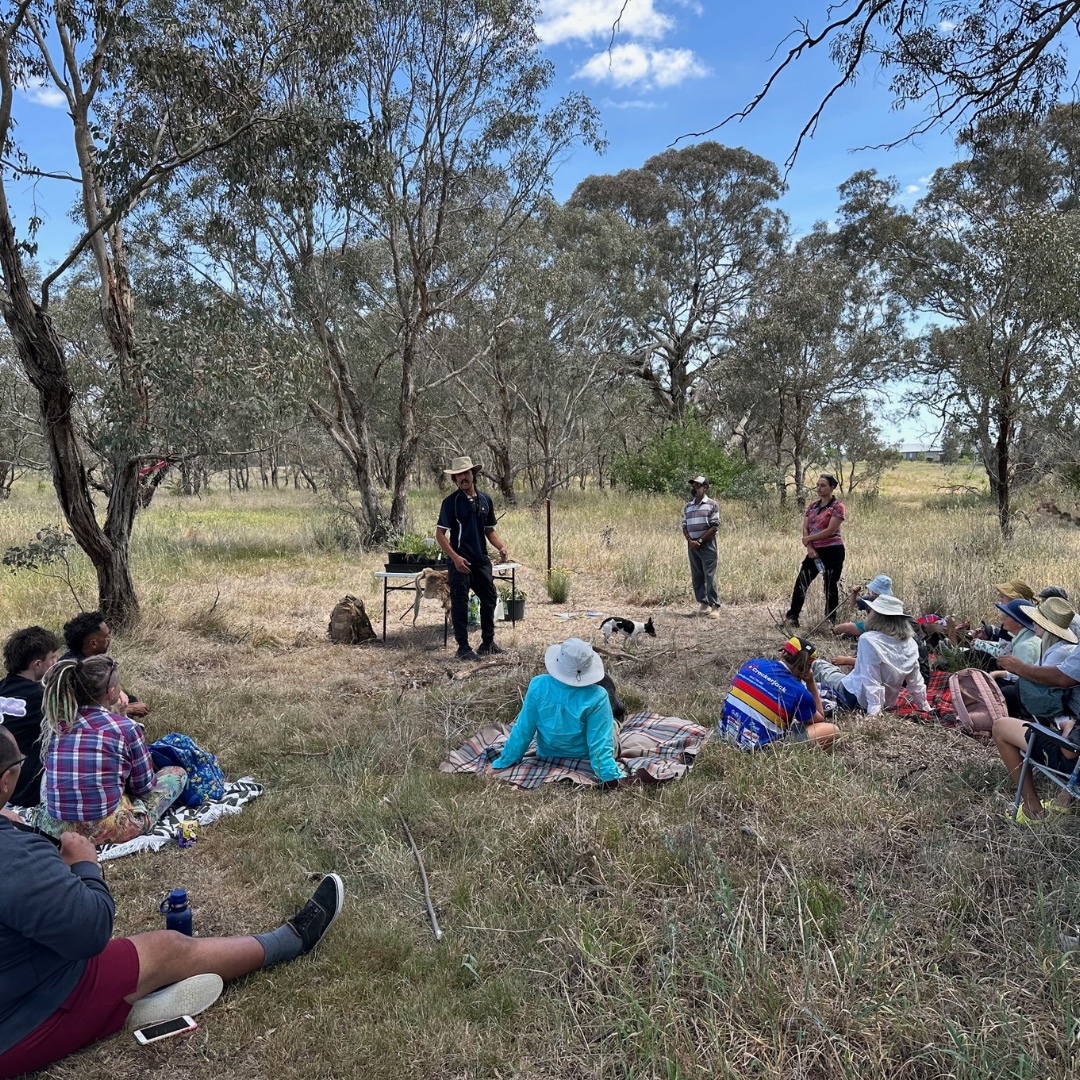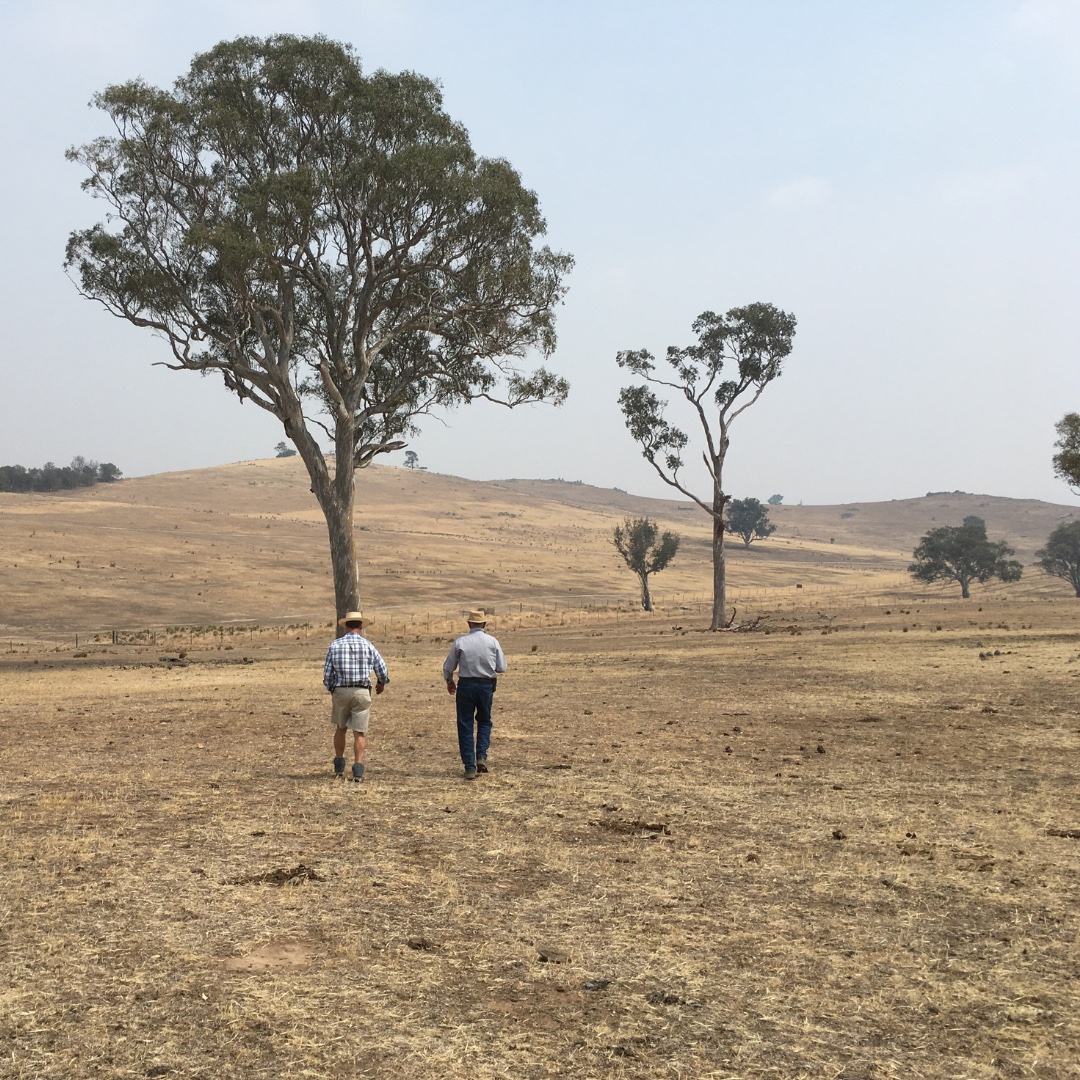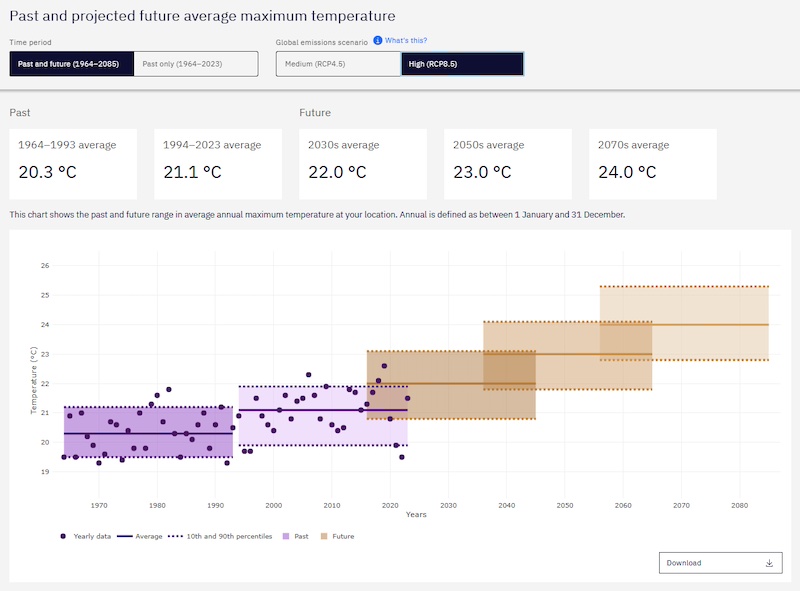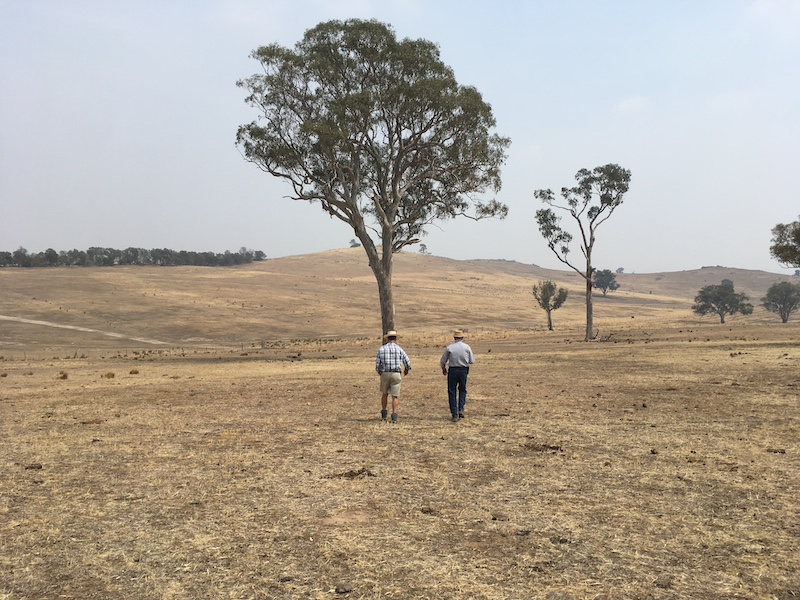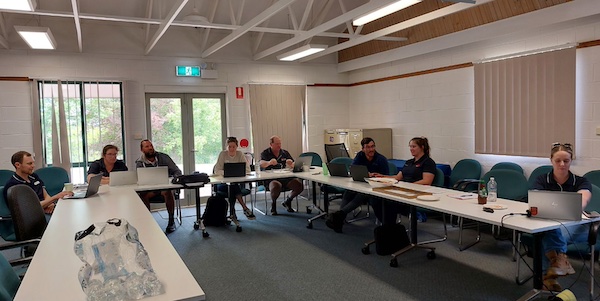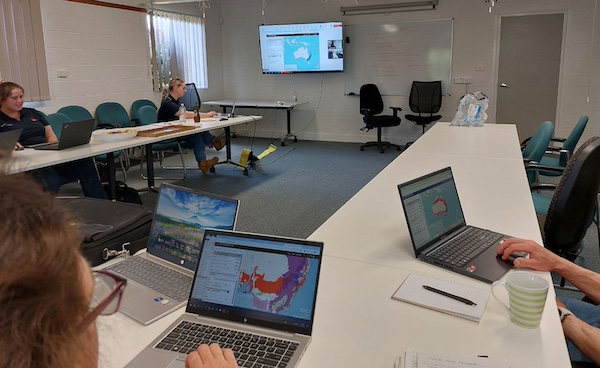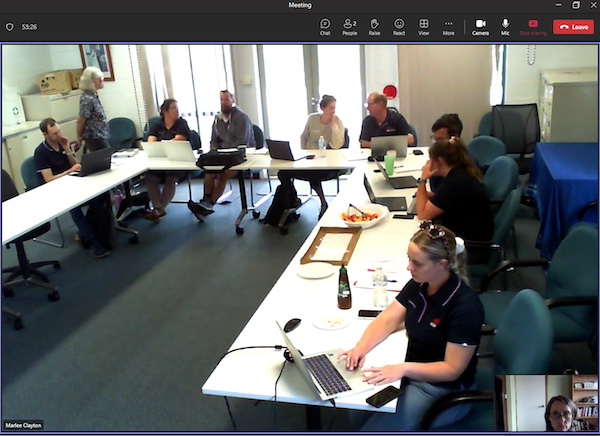The Murrumbateman Village Reserve came alive with the spirit of connection and learning during the Murrumbateman Landcare Native Plant Use, Traditional Tools, and Indigenous Culture Workshop. Hosted in the beautiful grassy woodlands of the reserve, the event featured Aaron Chatfield from Dreamtime Connections, a Gamilaroi man deeply connected to Ngunnawal people and Country.
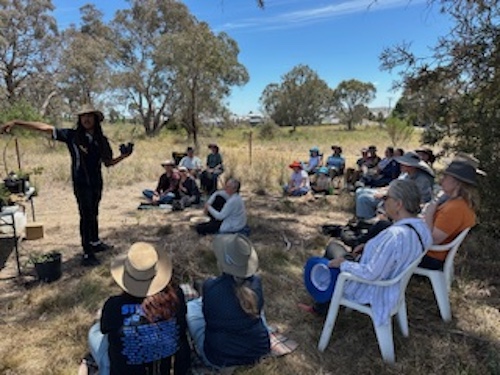
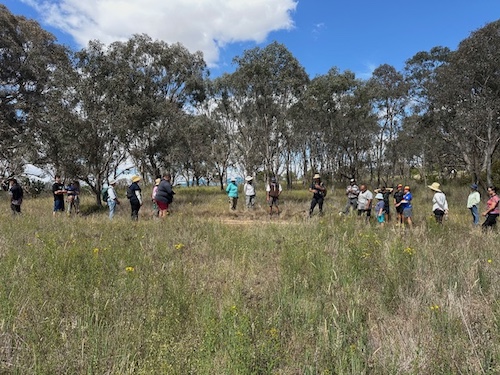
Aaron’s passion and vast knowledge captivated participants as he led a walk through the reserve highlighting the native plants and wildlife, offering fascinating insights and practical demonstrations. From showcasing traditional tools like boomerangs, bull roarers, emu callers, and digging sticks to sharing the flavours of bush tea, wattleseed biscuits, and native tomato with pepper, the workshop was a feast for the senses and the mind.
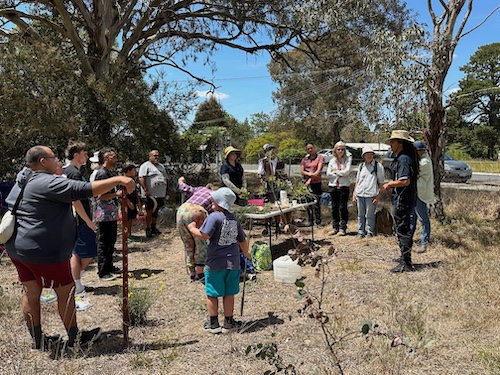

It was fascinating to discover so many different facts, including how red-headed meat ant nests can signal seasonal changes, how blackwood wattle leaves make an excellent natural soap, and how cassinia shrub leaves can be used as a band-aid.
The event brought together a diverse group of participants, including local and visiting Ngunawal community members, Murrumbateman locals, and members of Murrumbateman Landcare. It was a fantastic opportunity to celebrate and learn from the rich cultural heritage of the First Nations people while deepening our connection to the local landscape.
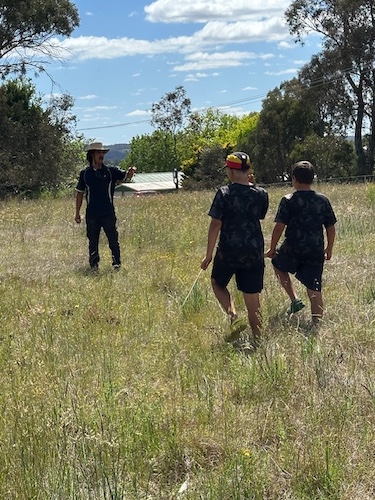
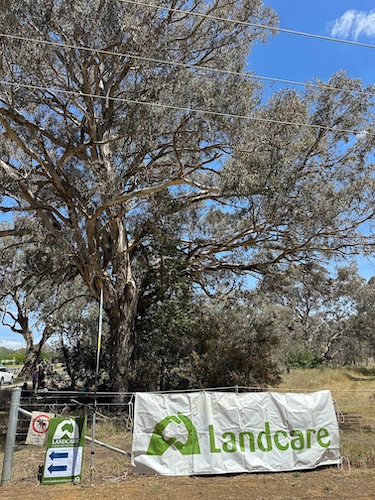
Murrumbateman Landcare is excited to continue working closely with the Ngunawal community to manage and care for the Murrumbateman Village Reserve, ensuring this beautiful place thrives for generations to come.
Thank you to everyone who attended and contributed to making this day so special. We look forward to hosting more events that celebrate the wisdom of Indigenous culture and the wonders of our natural environment.
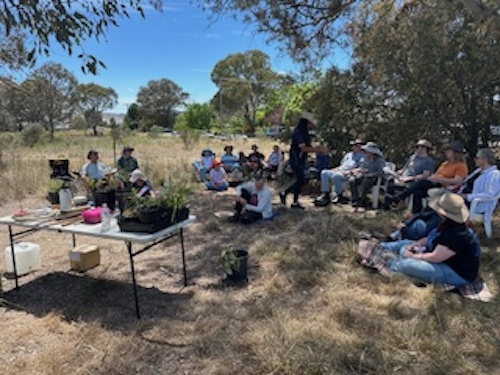

Stay tuned for updates on future workshops and activities with Murrumbateman Landcare and the Yass Area Network of Landcare Groups.
Written by Jacqui Stol, Murrumbateman Landcare

